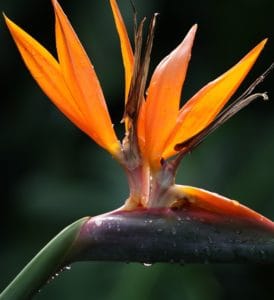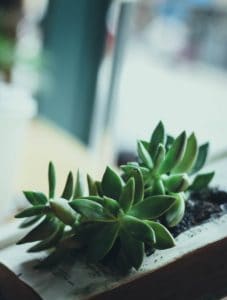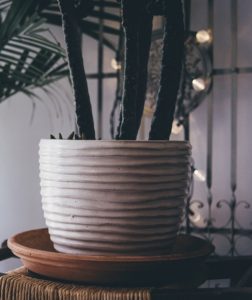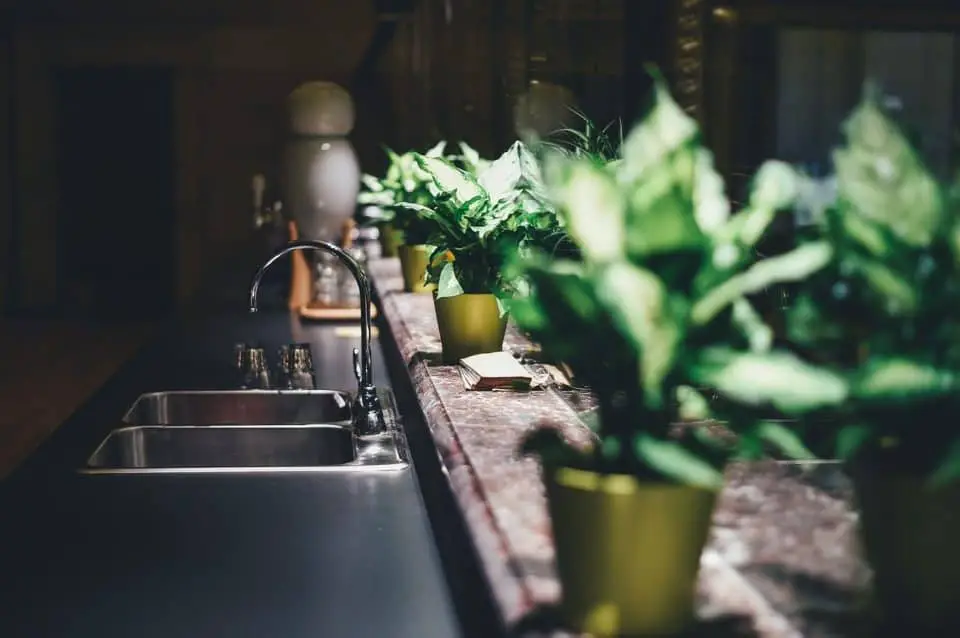Some links in the post are affiliate links and I get a commission from purchases made through some links found in the post.
Every home has a place where a tall indoor plant is meant to go. Sometimes this can be an empty corner, or even a blank wall which just needs something to liven it up a little.
You may simply want a tall indoor plant to make a statement in your room.
Indoor plants can range from small potted flowering shrubs to tall trees – and everything in between.
They are often grouped together for better effect, although some people will dispute this and have their plants placed alone.
Whatever way you choose to place your indoor plants, it is important to consider which are the best tall indoor plants for low light areas.
Often placing a plant indoors means that it is in an area where the light is less than perfect.
While some plants will do well in poor lit areas, many others will not, so it is worth knowing which to choose and which to plant outside.
Best Tall Indoor Plants for Low Light Areas
The best tall indoor plants for low light areas are; umbrella plants, rubber plants, swiss cheese plants and the bird of paradise.
1) Umbrella plants
The umbrella plant used to be all the rage some years ago and then seemed to fall out of favour. They do seem to be making a comeback now.
Myself, I don’t know why they were ever unpopular as they are delightful plants for indoors. They are very graceful looking plants and easy to maintain.
Pros
- Easy-to-care for
- Dwarf version stays at a smaller height
Cons
- They are toxic to both dogs and cats
2) Rubber plant
These amazing trees grow huge! In Spain we have them outside growing to over 30’ high! Rubber plants are easy to grow and these tall indoor plants do well in bright or low light areas.
Pros
- Elegant glossy leaves
- Very adaptable to light conditions
- Placing in a brighter spot will encourage extra growth
Cons
- Needs fast draining mix
- Will not do well if overwatered
- Soil needs to be moist at all times but not sodden
3) Swiss Cheese Plant
These used to be extremely popular in the 80’s and they are making a comeback now with people choosing them as indoor plants because they make such a statement wherever they are placed.
They will do well in either moderate or indirect light.
Pros
- They grow fast
- They will become climbers if trained
- Easy to plant and propagate
Cons
- They need a big space
- Be careful watering as they don’t need to be soaked, once a week will do.
We have a complete guide on how to look after a monstera.
4) Bird of Paradise
 You probably recognise this as the Strelitzia. My mom had one which grew huge.
You probably recognise this as the Strelitzia. My mom had one which grew huge.
Definitely one of my favourite tall plants. A birds of paradise is easy to medium to grow and even easier to maintain.
They produce leaves which unfold to reveal their beauty.
If your birds of paradise plant leaves are curling, find out here!
Pros
- Works well on its own or in a group
- Adaptable in either low light or direct bright light
Cons
- Do not like soggy soil
- Needs regular misting to keep the humidity levels high
Best Tall Indoor Trees for Low Light
Naturally, indoor trees need extra space, both in the height and the area they cover.
They need a pot which is big enough to keep them happy while still constricting their excessive height. As with any other indoor plants they need good drainage.
The best tall indoor trees for low light are the madagascar dragon tree, the ficus and the fiddle leaf fig.
1) Madagascar Dragon tree
Also called the Dracaena Marginata these are very easy to grow inside and they do well in low light areas. In fact, they prefer to be out of direct sun as this can burn their leaves.
If you are having problems with this plant check out our article on how to save a dying dracaena marginata plant.
Pros
- Easy to grow so suitable for newbie gardeners
- Drought tolerant
- An excellent air purifier, removing formaldehyde, trichloroethylene, and xylene from air
Cons
- Will suffer if overwatered
- Does not like fluoride in the water so you may need to use distilled water
2) Ficus
This plant will tolerate either bright, indirect, or low light conditions. They are attractive because their leaves can vary from dark green to pale yellow. They need fast draining rich potting mix.
Pros
- Low maintenance
- Tolerates low light well
Cons
- Must be pruned regularly to prevent branches coming into contact with the ceiling or walls
3) Fiddle Leaf Fig
You can buy the fiddle leaf fig either as small plants or as mature tall plants. You will find them as short as 2’ or as tall as 10’.
This plant loves the sunlight in the early mornings and does well being fed once a week in the spring and summer.
Pros
- Hardy plants
- Large leaves
Cons
- It is easy to overwater them, they don’t like to be wet.
What to Consider for Tall Plants
 With any plant there are good points and bad points, rather, there are things which keep the plant happy or leave it in an unhealthy state.
With any plant there are good points and bad points, rather, there are things which keep the plant happy or leave it in an unhealthy state.
With tall plants there are some unique things to bear in mind.
Possibly the most problematic area for tall plants is the tendency to overbalance and break, or simply tip over because they are too top heavy.
Staking
It will help if you stake the plant as soon as you repot it into its new pot.
If you try to stick a stake in when the plant is large, you run the risk of damaging the root system, introducing bacteria, and generally making your tall plant miserable.
While it may look odd at first for the plant to have a solid stake, it will give the plant time to adjust to the stake and not be injured when it is later inserted.
Cleaning
Unless you make a concerted effort to get on a chair and clean the top leaves they will simply gather dust which will clog up the pores on the leaves.
Your plant will not look its best and may even hinder the photosynthesis which takes place in your plants. Plants with large leaves are particularly susceptible to this.
What to Consider for Low Light Plants
Curling Leaves
This is normally a sign of an insect presence or a disease. If you look closely at the leaves you may see signs of the culprits.
Also if there is any disease you should see either fuzzy white spots or tiny black spots.
If you take some pictures of the areas and head for your garden centre they will know whether to give you a specific anti-bacterial or anti-fungal solution.
Stretching Leaves and Stems
Even though your plant may be fine in low light, this is a sign that it needs a little more light than it is getting.
You may also want to rotate the plant so that all sides get the same amount of light per day.
Brown Tips on Leaves
This often happens because of inconsistent watering. Even if a plant is known to be drought resistant it still needs water. You may not need to water it every week, but it needs some.
Another reason may be low humidity. Many houseplants are from the tropics where the air is moist. You should mist your plant every couple of days.
The third reason may be too much salt in the water or even the overuse of fertiliser. You may want to try distilled water instead of tap water and go easy on the fertiliser.
Importance of Light – Even Low Light
Although we talk about plants that do well in low light, most of them have adapted to these conditions by evolving to broad leaves which catch as much sunlight and sunshine as they can.
Light is an essential part of any plant life, without light the plant will not survive. While some plants can live on low level lights, they will always need some light to grow.
Indoor plants are classed as low, medium, and high for their light requirements, with light intensity, quality and duration being the influencing factors.
The quality of light can be improved by using artificial means such as red and blue wavelengths. Fluorescent lights best mimic natural light.
If your plant seems to be lanky and stretch upwards, check the light quality and intensity first.
Plants require a time of darkness for them to properly develop. Keep all exposure to light to under 16 hours per day so they can rest.
Issues with Too Little Light
- Leaves will turn yellow
- Stems become spindly
- Leaves remain small
- Tips of leaves develop brown areas
- Lower leaves become dry
- Variegated leaves lose variegation patterns
Final Thoughts: The Best Tall Indoor Plants for Low Light
 Most homes have that awkward corner where it is a little too dark for many plants to grow well.
Most homes have that awkward corner where it is a little too dark for many plants to grow well.
This is when we start to look for plants that can tolerate low light conditions – and there are many that will adapt to that corner quite nicely.
There are several things to remember with low light plants. Be particularly careful about the soil they are potted in, which must provide good drainage. This is important if your plant is to do well.
If you bear in mind that the best indoor plants need different things to those you would plant in your garden.
You will be able to fill that gap with a beautiful plant – healthy and thriving in its perfect environment.
Before you go, here are some more related articles I encourage you to read below to help solve more of your gardening issues:
The Top 12 Outdoor Plants That Reduce Air Pollution
10 Great Striped Leaf Plants to Own & Pot Selection Tips
Best Plants to Have in an Office with no Windows
Written by: Valerie Holyoak


